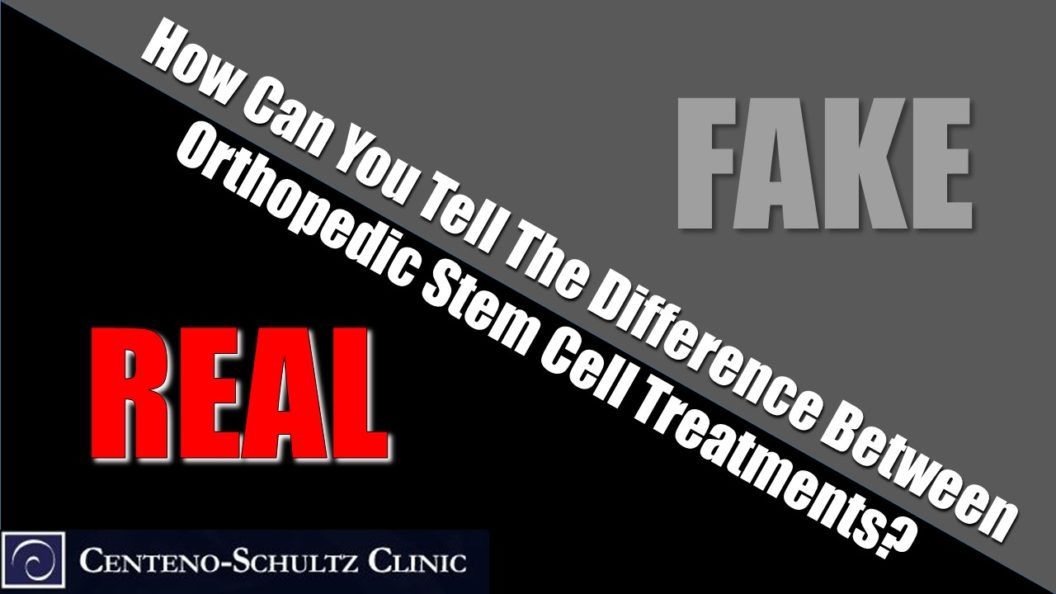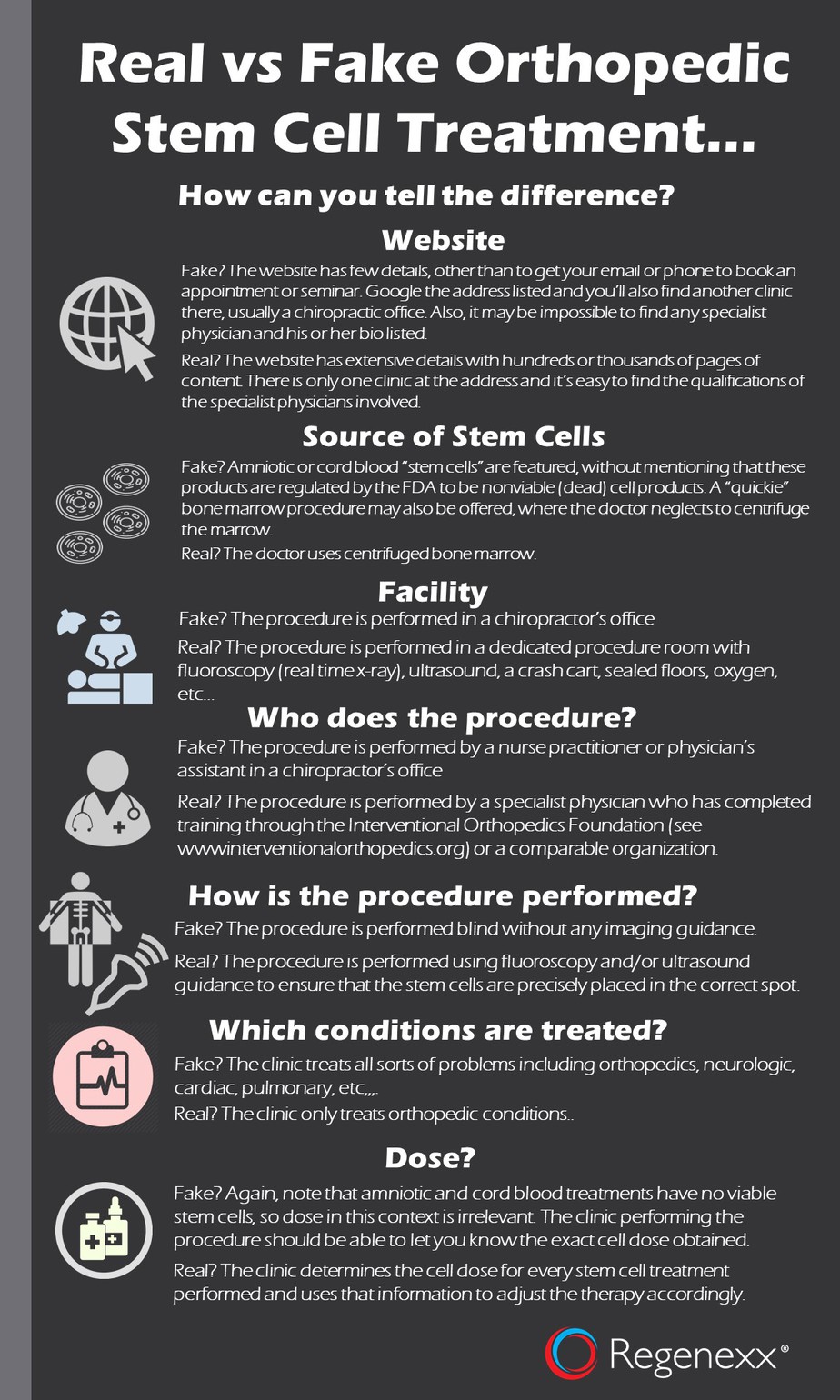Countless clinics across the country now offer stem cell treatments. Unfortunately, however, not all clinics are legitimate, so it’s extremely important that you understand what you’re getting when you are considering an orthopedic stem cell treatment. So many are making claims that simply aren’t possible to achieve, such as being able to retread a joint with new cartilage where none exists or treating orthopedic conditions with various types of birth products that don’t contain live and viable stem cells.
Many push marketing schemes disguised as stem cell seminars on those suffering from long-time joint pain and disruptions in function who are grasping for a magic cure. You can imagine how easy it must be to be swayed under these conditions, so today we are going to focus on how to know if an orthopedic stem cell treatment is the real deal. Later this week, using the same categories below, we will follow up with how to know if an orthopedic stem cell treatment is fake (you can take a sneak peek by clicking on the image to the right).
Study the Website
The website should contain extensive details and research pertinent to the stem cell treatments being performed there. In addition, the clinic should have its own publications and extensive content. You should be able to answer any question you have simply by browsing the website. The website should also provide a physical address that houses only one working clinic at that address as well as direct contact information. The website should also provide the qualifications of the interventional orthopedic physicians who perform the stem cell treatments (nurse practitioners [NPs] and physician assistants [PAs] don’t count here—orthopedic stem cell treatments must be performed by physicians properly trained in interventional orthopedics).
Know the Stem Cell Source
Orthopedic stem cell treatments should utilize bone marrow stem cells harvested from the patient. The bone marrow stem cells are then isolated and concentrated (bone marrow concentrate, or BMC) and reinjected into the patient on the same day. If the bone marrow stem cells are being reinjected within a few minutes, this is likely a quickie stem cell procedure, and you don’t want that either (we’ll discuss this more in our next post). Going back to the website, it should be clear that this is the stem cell source the clinic uses. If a clinic is performing orthopedic stem cell treatments with amniotic or cord blood “stem cells” or “stem cell products,” this is a fake stem cell procedure, and we will discuss this more in our next post.
Learn About the Facility Setup
The procedure must be performed via precise imaging guidance, such as ultrasound, fluoroscopy (real-time X-ray), and other advanced guidance techniques. There must be a procedure suite that houses sterile equipment and standard emergency devices, such as a crash cart and vital signs monitor, an automated defibrillator and oxygen, sealed floors, and so on. Again, the website should provide plenty of detail on facility setup.
Know Who Performs the Procedure
This one is simple to determine. Orthopedic stem cell procedures must be performed by a physician extensively trained through the Interventional Orthopedics Foundation. Make sure the physician performing treatment meets this qualification.
Find Out How the Procedure Is Performed
The procedure must be performed using precise imaging guidance (e.g., ultrasound and/or fluoroscopy). Otherwise the procedure is being performed blindly, meaning there is no way to tell if the bone marrow stem cells are being injected into the correct spot.
Review What Conditions the Clinic Treats
A clinic performing orthopedic stem cell treatment should specialize in and treat only orthopedic conditions.
Find Out How the Clinic Doses Your Stem Cells
Orthopedic stem cell treatments are not a one-size-fits-all approach. Stem cell dosing should be customized for each individual patient. This means the clinic must have the lab technology to customize the dosage and adjust treatment therapies accordingly.
This post is a start to making sure your orthopedic stem cell treatment is the real deal. If you want to dig deeper into the topics above and learn more details, such as the importance of a clinic’s lab sophistication and medicines physicians use that actually kill stem cells, watch Dr. Centeno’s video below:
See how Joe and Marilyn found success with stem cell therapy
Most importantly, now that you know how to determine if an orthopedic stem cell treatment is real, ask questions. Ask for the research, and make sure it’s pertinent (more on this in the next post). Ask about the clinic setup. Review the website content, videos, testimonials, publications, and so on. Stay away from any orthopedic stem cell treatment that isn’t the real deal.


